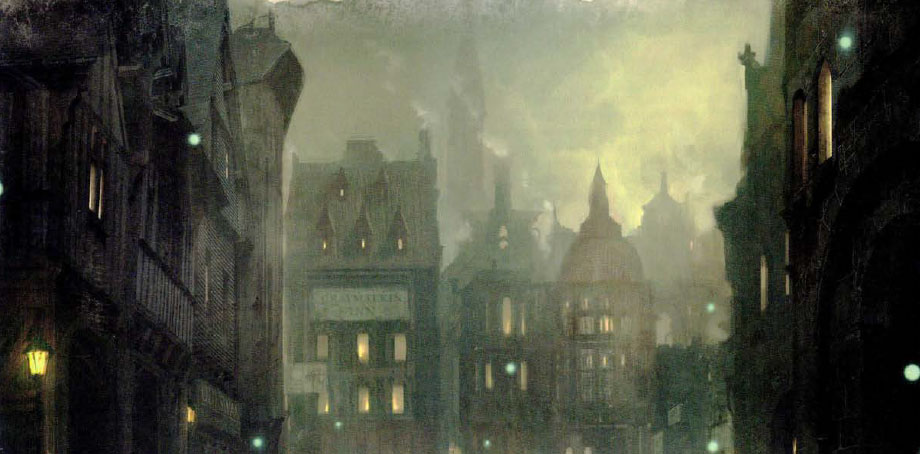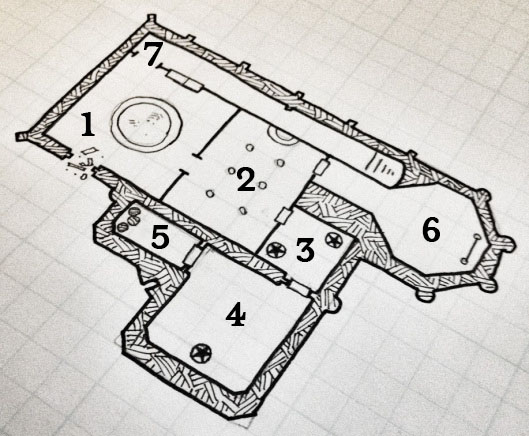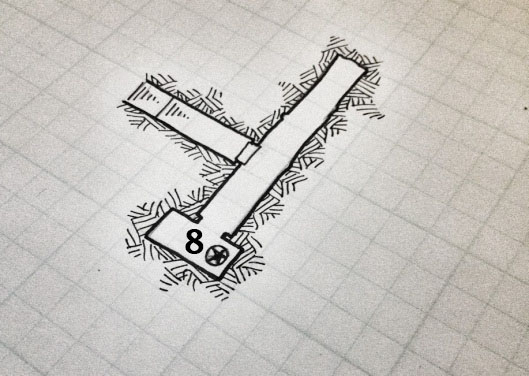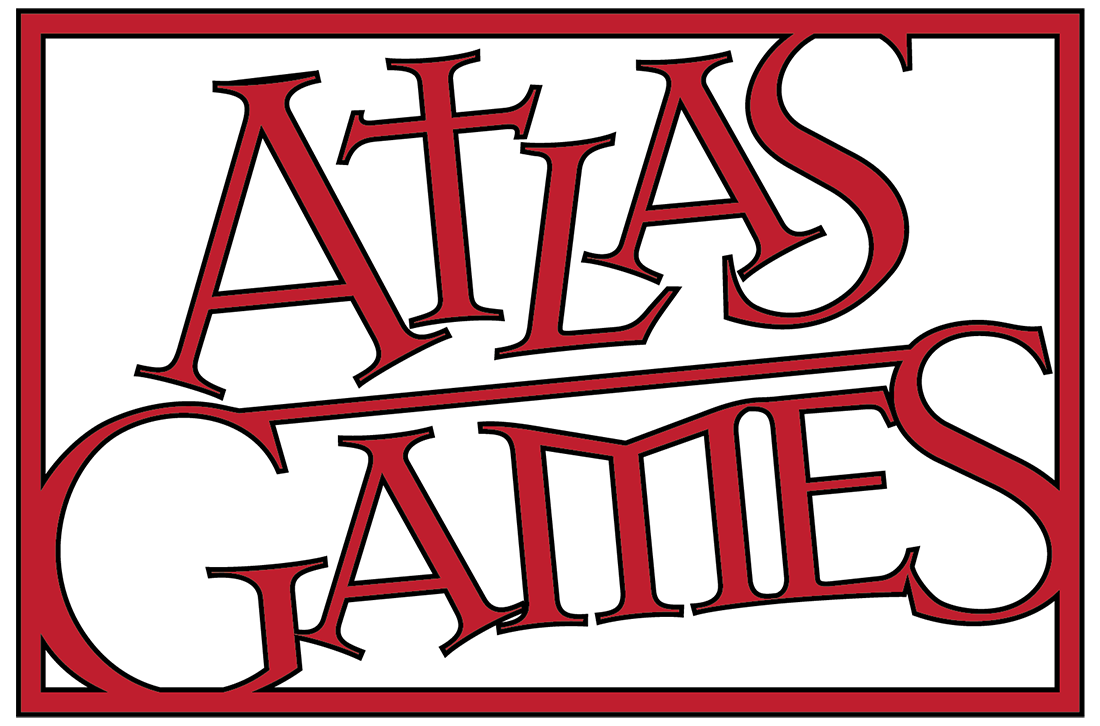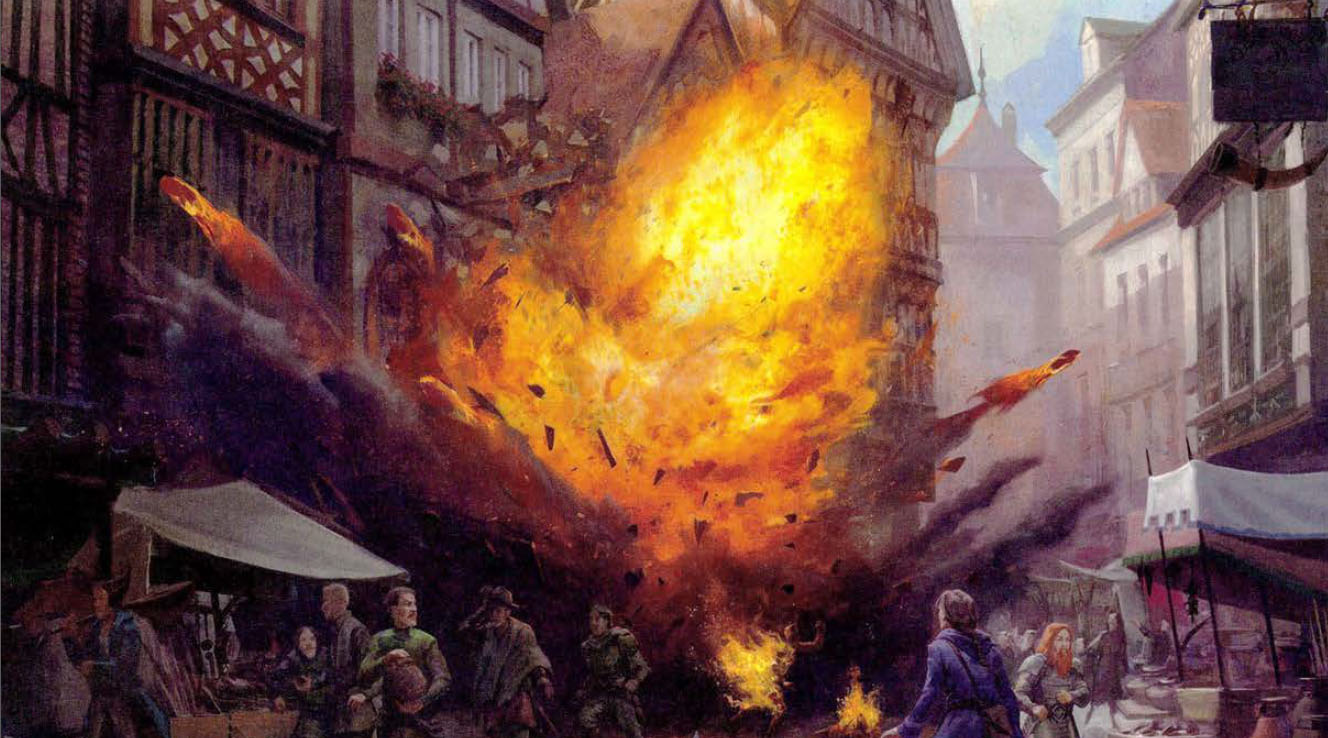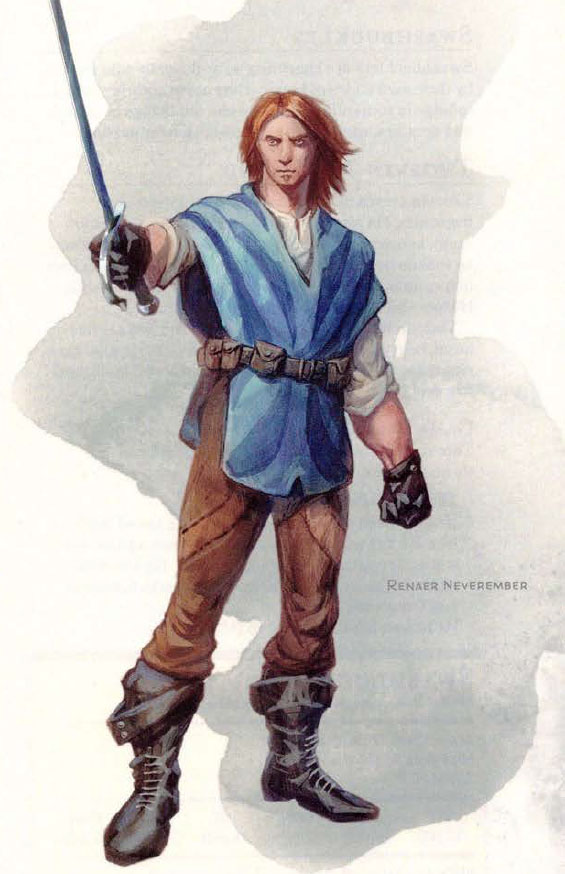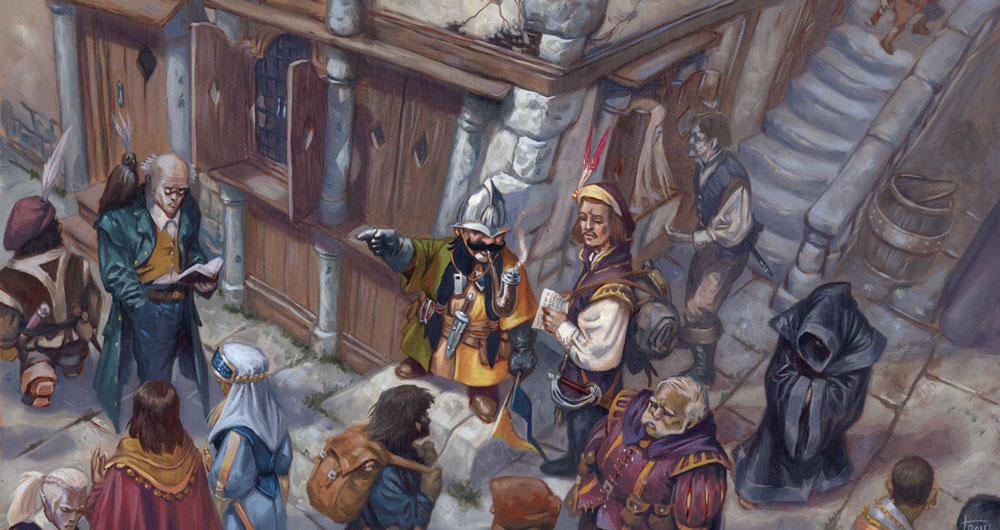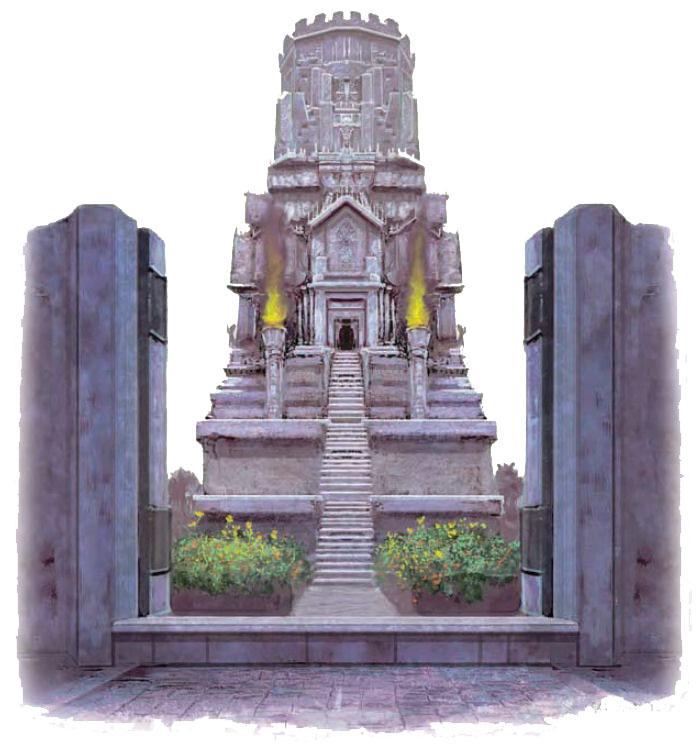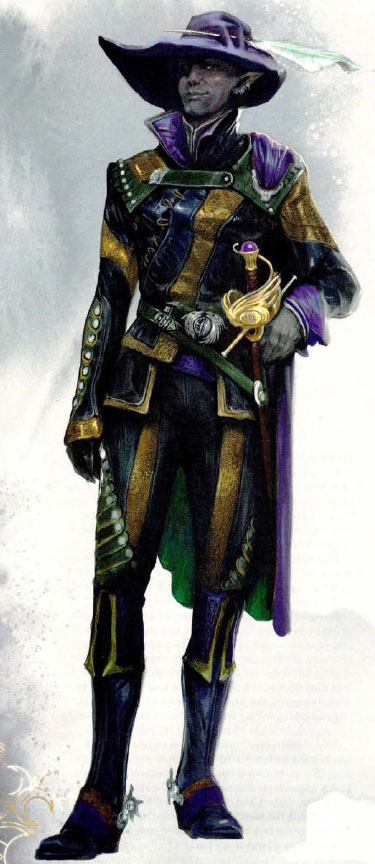In remixing Dragon Heist as a dynamic campaign, it becomes necessary for the DM to be able to respond dynamically to the players’ actions. As I mentioned in the description of the Faction Outposts, the DM needs to be actively playing each faction. Response teams are the other half of that equation, providing small, proactive units for each faction that can be deployed as necessary.
These response teams are your primary proactive nodes for Dragon Heist. If you’re unfamiliar with the use of proactive nodes, they’re discussed as part of Advanced Node-Based Design. The short version is that the proactive nodes are the ones that come looking for the PCs. (As opposed to, say, the lairs and the outposts, which the PCs are most likely to go looking for.)
A few examples of what you can use response teams for:
- Competing onsite with the PCs during the Eye Heists (see Part 4), seeking to seize the prize before they can. (Or take it from them after they’ve gotten it.)
- Sent as negotiators to the PCs.
- Attempting to steal the Stone and/or Eyes from the PCs (break-ins at Trollskull Manor, attempted muggings on the street, etc.).
- Waylaying the PCs on their way to the Vault.
- Interfering with the PCs’ efforts to remove the gold from the vault.
But, ultimately, you’re thinking about what the factions know and thinking about how they would respond and then you’re going to use the response teams to do that.
GM Tip: If you’re new to this sort of thing and struggling to come to grips with it, there are a couple of things you can do.
First, take 5 minutes between sessions to think about what each faction is going to do next. Some of those things won’t affect the PCs; some will. Make a list of those and when they’ll happen: Gorath will come to Trollskull Manor at 5pm on the 10th. Souun Xibrindas will target one of the PCs for assassination with a sniper team at 10am on the 11th. And so forth. You can do the same thing during a mid-session break. Eventually, you’ll be able to do it in real-time while playing.
Second, as you’re ready to make that transition, make a simple list of the response teams. Stick it to your GM screen as a Post-It note or otherwise keep it handy. When you feel a need to respond to what the PCs are doing, glance at the list and go. You don’t have to keep all this information in your head simultaneously: Make cheat sheets.
COUNTER-INTELLIGENCE: Awhile back I designed skill guidelines for counter-intelligence — if you’re asking questions about certain people or organizations, there’s a real risk that they’ll find out that you’ve been asking questions. Those guidelines were designed for 3rd Edition, but you shouldn’t find it too difficult to adapt them to 5th Edition.
Once the PCs know that they’ve gotten themselves tangled up in a Grand Game, you may also want to tell the players about the counter-intelligence procedures. Partly because it’ll give them the opportunity to guard their own intelligence-gathering efforts, but more importantly because it will give them the opportunity to perform counter-intelligence: When the factions are trying to figure out who the PCs are or who they’re working for or what they’re up to, if the PCs are vigilant they may catch wind of that. And that may provide an alternative avenue for investigation (usually taking them to one of the Faction Outposts).
BREGAN D’AERTHE RESPONSE TEAMS
Bregan D’Aerthe’s response teams all follow a common profile:
- 1-2 drow gunslingers (DH p. 201)
- 4-8 drow (MM p. 126)
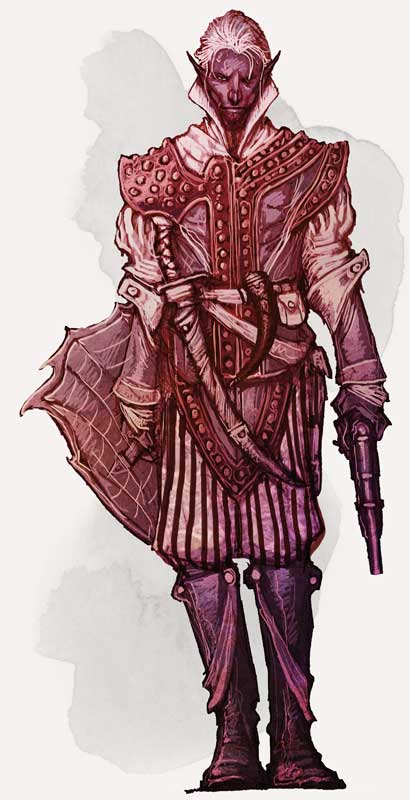 One of the drow gunslingers is likely to be one of Jarlaxle’s lieutenants (DH p. 201-202):
One of the drow gunslingers is likely to be one of Jarlaxle’s lieutenants (DH p. 201-202):
- Fel’rekt Lafeen
- Krebbyg Masq’il’yr
- Soluun Xibrindas
Later in the campaign, you might have a team with all of the surviving lieutenants show up for a climactic battle.
Note that Fel’Rekt is also the lieutenant leading the Bregan D’Aerthe team at Gralhund Villa (see Part 2). All of them have quarters on Jarlaxle’s ships.
FEL’REKT LAFEEN
- A Recommendation for Materiel: A note written in silver ink on black paper. “Regarding the need for alternative sources of materiel, make contact with Grinda Garloth of Mistshore. Use all caution and do not reveal your true heritage, as she is allied with the beholder and that poses certain risks for us now. – J”
KREBBYG MASQ’IL’YR
- Sealed Letter to Fenerus Stormcastle. A simple missive addressed to “Fenerus Stormcastle, of Quill Alley” thanking him for his service. It is written in silver ink on black paper and signed “J”. It is attached to a velvet pouch containing 100 gp.
SOLUUN XIBRINDAS
- Carries a bloodstained playbill from the Seven Masks Theater, belonging to a performance of Blood Wedding which took place several nights earlier. (In the play, according to the playbill, a young woman is brought to a castle by a count, only to fall in love with his younger brother, a man of faith. Her betrayal eats away at the jealous count. He murders his brother on his wedding day and pursues the bride, who hurls herself off the castle battlements in despair. The count is cursed by the gods and transformed into a creature of darkness, damned to live in his castle and feed on blood.)
- GM Note: Soluun has taken to attending plays at the Seven Masks Theater and then stalking and murdering elven and half-elven members of the audience after the show.
CASSALANTER RESPONSE TEAMS
If the PCs have agreed to help the Cassalanters, then the Cassalanters will generally be fairly passive in their activities. (The PCs are their agents in the field.) If the PCs request assistance from them, however, the Cassalanters might dispatch Seffia Naelryke and her team (either to gather intelligence and deliver it to them, or to fight at their side).
If the PCs turn down the Cassalanters, then the whole shape of the campaign will shift:
- Imps summoned at the Asmodean Shrine will try to keep the PCs under constant surveillance, keeping the Cassalanters apprised of what the PCs are doing and learning.
- Add Seffia’s team to the Eye Heist at Xanathar’s. They’ll be aiming for the same goal.
- Willifort Crowelle will attempt to assassinate Jarlaxle. He’ll fail, but a few days later he’ll target the PCs in a similar attempt. This may prompt Jarlaxle to reach out to the PCs and propose an alliance against the Cassalanters.
SEFFIA NAELRYKE: Seffia is a loyal Asmodean cultist. She lives at the Converted Windmill outpost with Arn Xalrondar.
- Seffia Naelryke (cult fanatic, MM p. 345)
- 2 spies (MM p. 349)
- 1 veteran (MM p. 350)
- 1 invisible imp (MM p. 76)
Seffia’s Letter: Seffia carries a letter from Lord Cassalanter. It reads: “Seffia—Lady Ammalia and I are both deeply moved by what your ritual accomplished. It speaks to your true faith in the power of our Master, and you have clearly been blessed by him. As you suspected, we did, in fact, find Neverember’s Third Eye in the crypt of Lady Brandath. Thank you for all that you have done. — Lord Victoro”.
- GM Note: This is a prized possession for Seffia and she keeps it with her at all times. She will cry out with anguish and rage if it is taken from her.
WILLIFORT CROWELLE: “Willifort” is supposedly the elderly tiefling valet of the Cassalanters. In truth he is a doppelganger and their most trusted lieutenant. Willifort might approach the PCs disguised as a friend or ally in order to pump them for information; or he may try to burn the PCs’ bridges by disguising himself as one of them and doing something to piss off powerful people. And when the Cassalanters definitively need a problem solved, Crowelle is the one they’ll send in with a team of demonic enforcers.
- “Willifort Crowelle” (doppelganger, MM p. 82)
- bearded devil (MM p. 70) or 2 cult fanatics (MM p. 345)
- 3 cultists (MM p. 345)
XANATHAR RESPONSE TEAMS
GORATH: Gorath is the leader of a small team of duergar. His team is sent in one when someone needs to be taught a lesson.
- 4 duergar (MM p. 122)
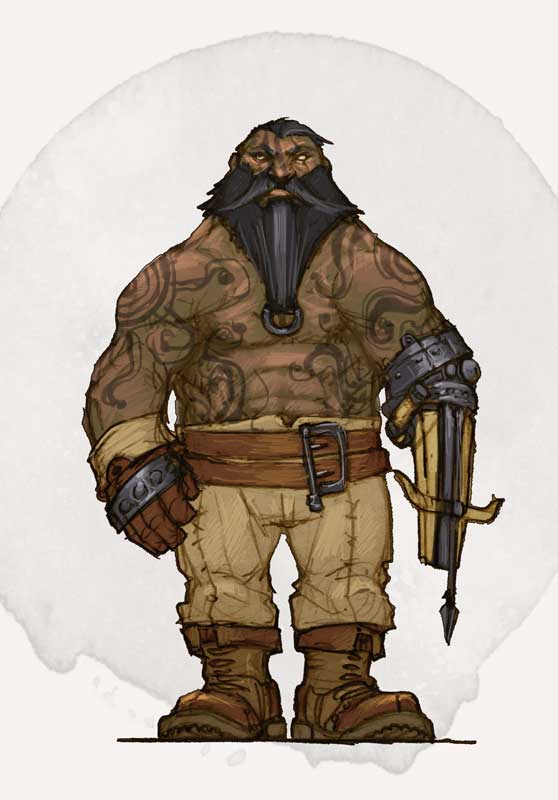 KORGSTROD UXGULM: If Gorath is taken out, Korgstrod is sent out from the Xanathar Sewer Hideout (see Outposts) to send a stronger message.
KORGSTROD UXGULM: If Gorath is taken out, Korgstrod is sent out from the Xanathar Sewer Hideout (see Outposts) to send a stronger message.
- Korgstrod Uxgulm (duergar, MM p. 122)
- 3 duergar
- half-ogre (MM p. 238)
- Orb Confectioners’ Note: The half-ogre carries a note which reads, “Orb Confectioners. Say: ‘Eight small eyes.’ ‘Around an ocular cake.’”
- gazer (DH p. 203)
NOSKA UR’GRAY: Noska, a shield dwarf, is another of Xanathar’s enforcers.
- Noska Ur’gray (DH p. 213)
- 6 bugbears (MM p. 33)
- gazer (DH p. 203)
A DIRECTIVE FROM N’ARL XIBRINDAS: The first or second Xanathar response team the PCs encounter should carry A Directive From N’Arl Xibrindas, instructing the leader of the response team to get “properly outfitted” by Grinda Garloth. (If it’s the second response team they’ve dealt with, it might specify that “these gutter-scum upstarts already took out [insert name here], so you’ll want to make sure you’ve got something a little extra to deal with them.”)
- This team has a potion of healing, potion of greater healing, and a +1 weapon. (They were, in fact, outfitted by Grinda.)
ZHENTARIM RESPONSE TEAMS
Manshoon’s response teams consist of:
- 1 lieutenant (Vevette, Urstul, or Agorn)
- 3-4 thugs
All of Manshoon’s lieutenants carry pass-amulets to Kolat Towers (see Part 4), but will attempt to destroy them if it looks as if they are being captured. (Except Agorn, that feckless weasel, who will attempt to barter it for his own life.) They leave their teleport rings with Sidra Romeir when journeying outside Kolat Towers. (If they’re slain by the PCs, Sidra will give them to Kaevra; see Part 4E.)
TO THE INTERROGATION HOUSE: Any Zhentarim response team sent to attack the PCs will have been instructed to take them as prisoners to the Zhentarim Interrogation House. If questioned, they’ll be able to point the PCs in the direction of the house in Brindul Alley in the Trade Ward.
VEVETTE BLACKWATER: When she was a young girl, Vevette was abused by her mother. A Zhentarim agent came to her when she was twelve, put a blade in her hand, and asked if she wanted to take control of her life. She did. And she’s been in the Black Network ever since.
Vevette’s past manifests itself in a deep streak of cruelty and ruthlessness, but to most outward appearance she is a charming bon vivant. She has fiery red hair with two streaks of brilliant platinum, which can actually glow in the dark on her command.
Stats: CE female Tethyrian human swashbuckler (DH p. 216)
Notes:
- Vevette carries Seffia Naelryke’s Visiting Card. It gives Seffia’s address as “the Windmill on Coachlamp Lane”. (GM Note: Seffia approached Vevette in order to open a discrete line of communication between the Cassalanters and Manshoon, but her overtures were rebuffed. After their experiences with Xanathar, the Zhentarim suspected a trap.)
AGORN FUOCO: Agorn made such a good impression on Manshoon that he was elevated quickly through the ranks of the organization, but his life was full of disappointment otherwise. He has not achieved the fame he craved nor earned the wealth he felt he was entitled to. He has adopted the Zhentarim credo that power comes to those who deserve it. In fact, he believed it so much that he murdered his own mother in order to “escape” her poverty. He has come to see the Black Network as a new family of sorts.
Agorn is a hollow coward. When engaging with the PCs, he will generally send the thugs under his command to attack while he remains at a safe distance. If his men are being slaughtered, he will bravely run away as quickly as possible in order to save his own worthless hide. As noted above, he will offer up his pass-amulet to Kolat Towers in exchange for his own life.
Agorn is friends with Amath Seccent (see Yellowspire in Part 3B: Faction Outposts), but he will gladly sell her out, too, revealing the existence of the teleportation circle in Yellowspire.
Stats: NE male Turami bard (DH p. 195)
Notes:
- Agorn carries a Report to Agorn Fuoco. “Korgstrod Uxgulm’s outfit is based out of the Orb Confectioners’ on Rising Ride just off Caravan Court. Not sure how the backroom can fit them all, but there’s no question that Xanathar’s duergar come in and out of there on the regular.”
URSTUL FLOXIN: Urstul is a thuggish man who notably leads both the Zhentarim attempt to capture Dalakhar (and gets blown up for his trouble) and their operation at the Gralhund Villa. If he survives the latter, he can crop up later leading a response team.
Stats & Background: DH p. 216
Notes:
- Urstul carries the Directive to Urstul Floxin: “Any prisoners taken from the other players of the Grand Game should be delivered to Avaareen in Brindul Alley. – By Order of the Zhentarim”
DESIGN NOTE
Vevette Blackwater and Agorn Fuoco are supposed to appear in Appendix B of Dragon Heist. As far as I can tell, however, they’re missing in action, so I’ve provided more detailed backgrounds for them here.
Note that the Zhentarim response teams are generally weaker than the response teams from the other factions. This probably means the Zhents won’t be taken as seriously by the PCs as the other factions, but it also makes them a good selection if you want to or need to hit the PCs when they’re already weakened.
Also check out the “Secret Simulacrum” option on page 162 of Dragon Heist for another Zhentarim response option.

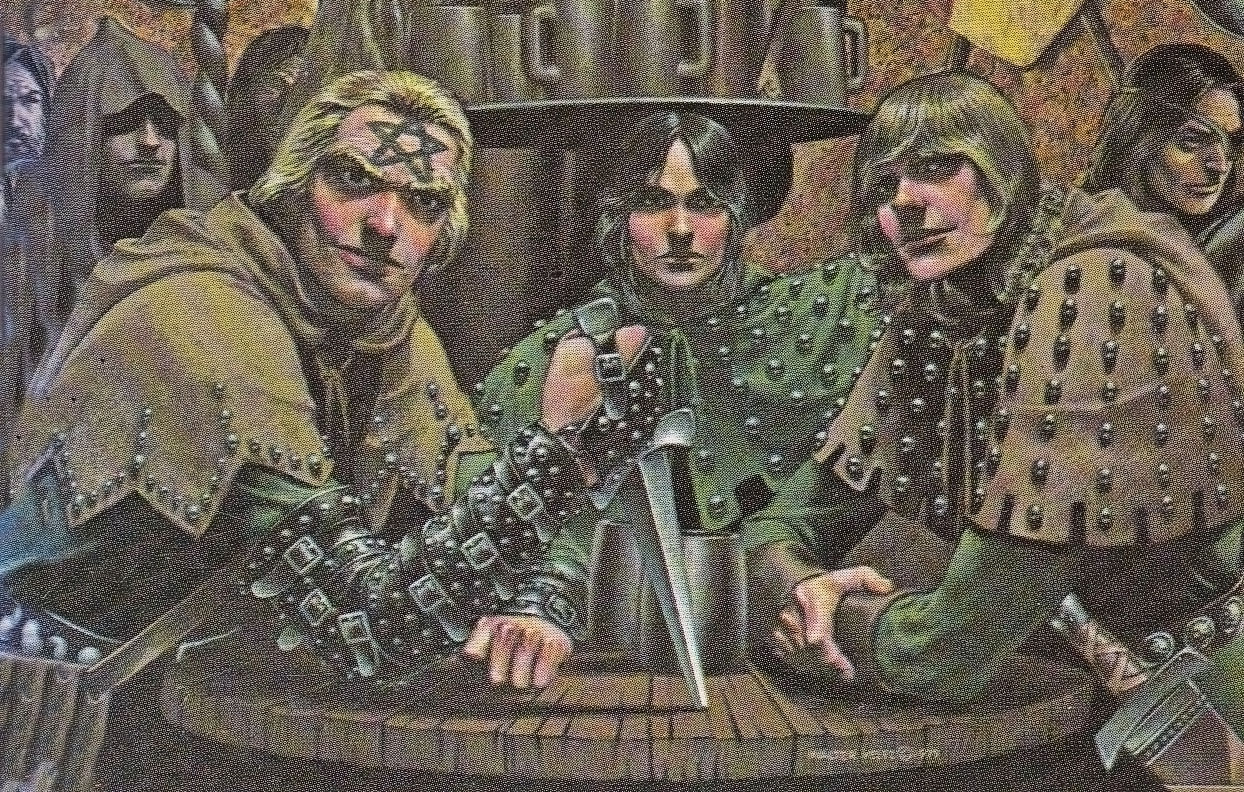
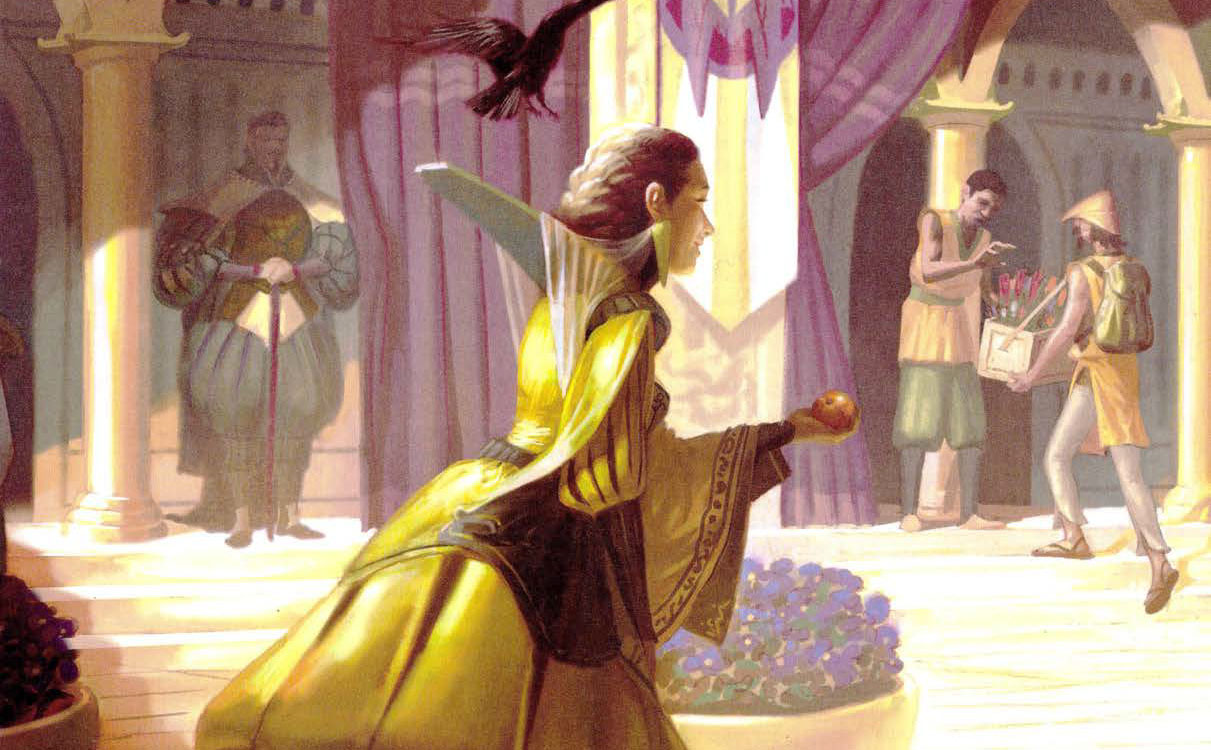
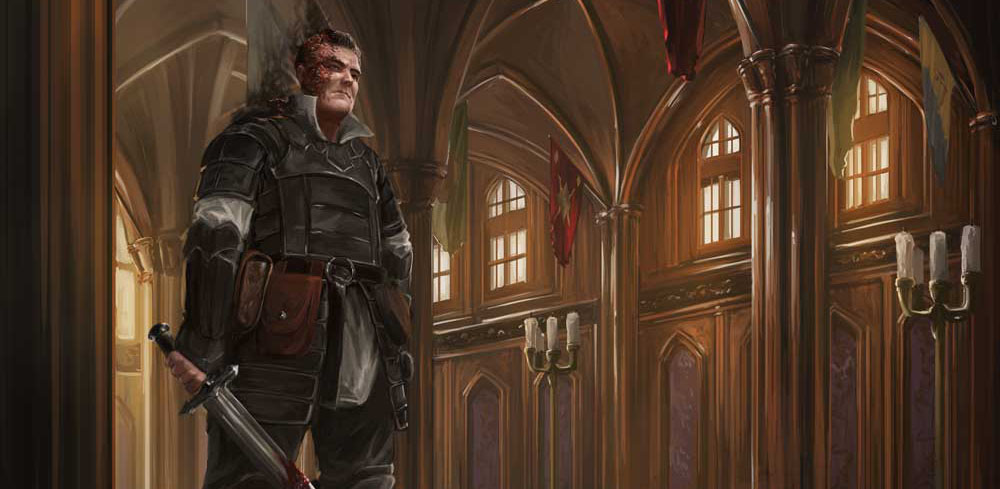
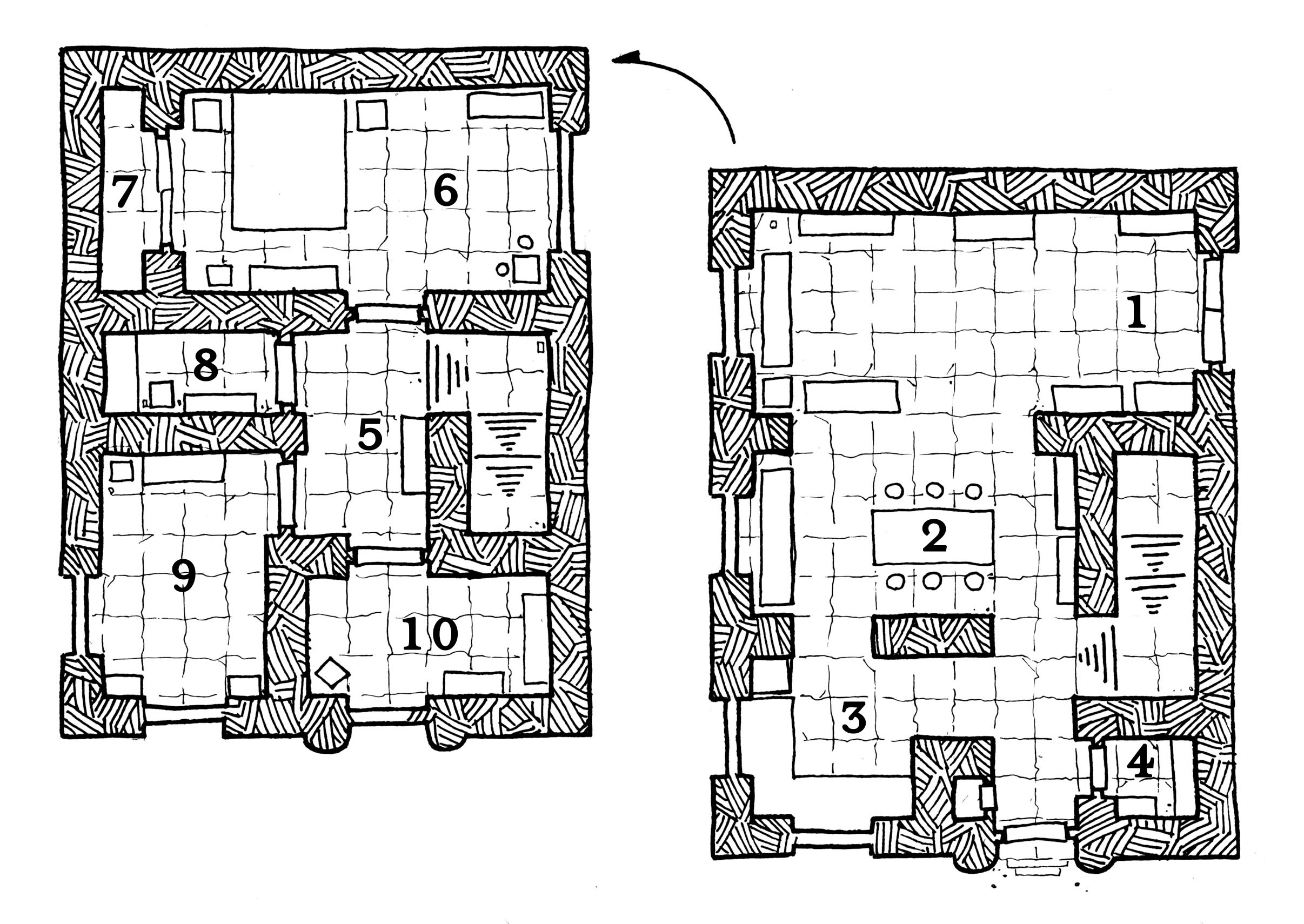
 Area 2 – Dining Room: Those here for gladiatorial gatherings are brought together in this room for light socializing and the enjoyment of various delicacies placed upon the table. (Roasted bulette with rare Shou Louan spices.
Area 2 – Dining Room: Those here for gladiatorial gatherings are brought together in this room for light socializing and the enjoyment of various delicacies placed upon the table. (Roasted bulette with rare Shou Louan spices. 

